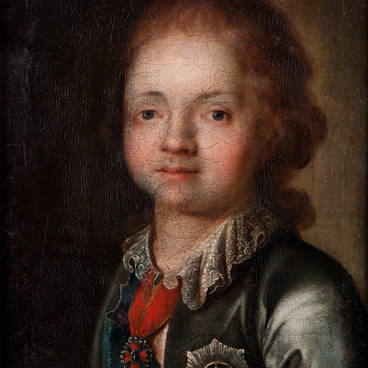A small pencil portrait depicts Evdokia Ivanovna Vorontsova (1755-1824). Her father, Ivan Illarionovich Vorontsov, was a senator, chamberlain and president of the Estate Collegium in Moscow. He owned many estates throughout Russia but considered Voronovo near Moscow the most valuable. Evdokia Vorontsova’s mother - Countess Maria Artemievna, nee - Volynskaya, gave birth to five children. So, Evdokia had two brothers and two sisters.
Little is known about the life of Evdokia Ivanovna herself. Only that she was not married, did not have children, and after her death she left her estate to the peasants.
The author of the portrait is the French artist Alexandre-François Caminade. He studied painting with Jacques-Louis David, painted frescoes for Parisian churches, paintings on subjects from Russian history, as well as portraits.
Graphic portrait drawings were part and parcel of the nobility in the 1st half of the 19th century. Before the invention and mass distribution of photography, portraits were the only way to capture a person. We can say that it was graphic portraits in the 19th century that served as photographs. Unlike oil-on-canvas, they were relatively small and produced faster, since there was no need to wait for the paint to dry. In addition, graphic work did not require a lot of materials (paints and brushes, solvents and thickeners). It was enough for the artist to have paper and a pencil.
This simplicity of technique does not detract from the artistic merit of the graphic works in general and the presented portrait specifically. Evdokia Vorontsova is depicted in a lace cap - a fashion attribute of the Baroque style. With a thin line of a sharp pencil, the artist draws all the details of the outfit: lace, satin ribbons, the denser fabric of the dress. He draws each curl of hair that has got out from under the cap separately. Presumably, the Countess is already over 45 years old here, but her age is revealed only by a small wrinkle on her forehead, between her eyebrows. The model’s gaze is directed to the side, it is thoughtful and serious. What the countess thought about, muse about a distance scene, will remain a mystery to us.
Little is known about the life of Evdokia Ivanovna herself. Only that she was not married, did not have children, and after her death she left her estate to the peasants.
The author of the portrait is the French artist Alexandre-François Caminade. He studied painting with Jacques-Louis David, painted frescoes for Parisian churches, paintings on subjects from Russian history, as well as portraits.
Graphic portrait drawings were part and parcel of the nobility in the 1st half of the 19th century. Before the invention and mass distribution of photography, portraits were the only way to capture a person. We can say that it was graphic portraits in the 19th century that served as photographs. Unlike oil-on-canvas, they were relatively small and produced faster, since there was no need to wait for the paint to dry. In addition, graphic work did not require a lot of materials (paints and brushes, solvents and thickeners). It was enough for the artist to have paper and a pencil.
This simplicity of technique does not detract from the artistic merit of the graphic works in general and the presented portrait specifically. Evdokia Vorontsova is depicted in a lace cap - a fashion attribute of the Baroque style. With a thin line of a sharp pencil, the artist draws all the details of the outfit: lace, satin ribbons, the denser fabric of the dress. He draws each curl of hair that has got out from under the cap separately. Presumably, the Countess is already over 45 years old here, but her age is revealed only by a small wrinkle on her forehead, between her eyebrows. The model’s gaze is directed to the side, it is thoughtful and serious. What the countess thought about, muse about a distance scene, will remain a mystery to us.



